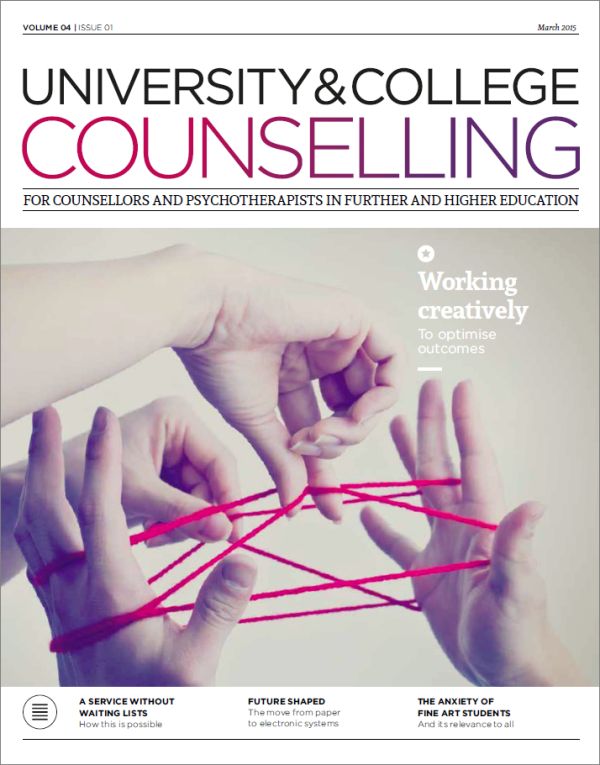In this issue
Features
The tyranny of waiting lists (free article)
Louise Knowles outlines how she runs a service without one of them
Student counselling: the research challenge
BACP UC PhD scholar Emma Broglia describes her new role
Creative tensions
Susan Marshall explores working with the ‘not knowing’ with fine art students
Get with the programme
Mark Fudge writes of his service’s journey to an electronic client management system
Hear (and now)
Anne Bentley talks about the Listening Post, where students can be heard at the time when they need to be
A changing relationship
Esther Hunt explores the therapeutic power of creativity
Divisional news

A pdf of this issue is available in the University and College Counselling archive
From the editor
The theme for this issue is working (and thinking) creatively. By definition, as counsellors it is our duty to remain fluid and outward-looking in our thinking. Yet there is a consistency to some of the topics that appear on the JISCMail: managing waiting lists; wondering whether to move from paper to electronic client-management systems… and the increasing levels of anxiety that appear to be presenting in student clients.
What is also clear, is that there is a pool of professionals in the sector, creatively wrestling with these issues and finding their own unique solutions. For me, this makes for exciting reading. Louise Knowles employed a review strategy used in the car industry to resolve the issue of her service’s overwhelming waiting lists.
Collaboration, too, plays its role. Mark Fudge writes of how much JISCMail and colleague support helped him in his decision to move to an electronic client management system. For Anne Bentley, Student Counselling Team Leader at Plymouth University, it was a partnership with the University of the Third Age that brought about an innovative extension to the service. In all instances, an openness to new ideas has been vital.
Running throughout each feature like a leitmotif are references to the ‘rest of the team’. Without exception, it seems the team involved in the implementation of each idea has also been open, engaged and keen to embrace the new. There has been anxiety, of course, but not to detrimental effect. Above all, though, in conclusion there seems to be a profound, satisfying feeling of ‘We did it!’ Which kind of parallels the work we do. If we hope that our clients will be open to previously unthought of, but ultimately rewarding ways of being, then it follows that we must be prepared to embrace the same.
Toni Rodgers
Editor
ucceditorial@bacp.co.uk
